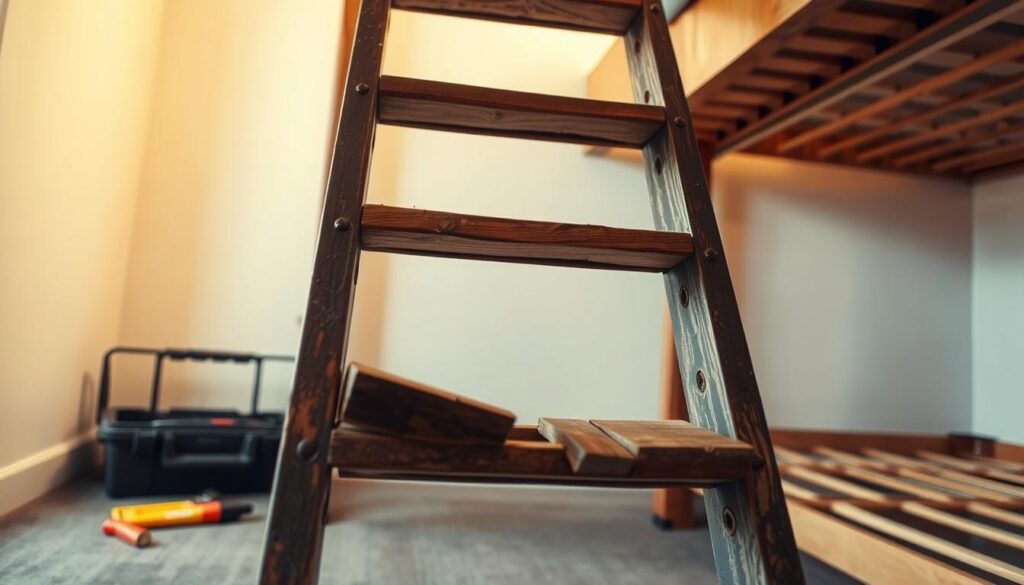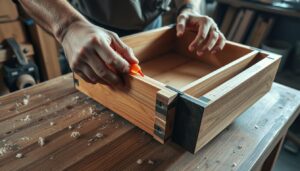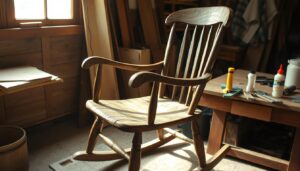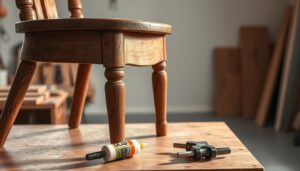Are you tired of a rickety bunk bed ladder that’s more of a hazard than a help? You’re not alone. Many of us have experienced the frustration of a faulty ladder that’s compromised the safety and functionality of the bed.
A bunk bed is a staple in many homes, especially where space is limited. However, when the ladder becomes damaged, it can render the upper bunk unusable. The good news is that you don’t necessarily need to replace the entire unit. With the right guidance, you can repair your ladder and make it safe to use again.
Key Takeaways
- Discover how to identify common ladder failure points and undertake simple repairs.
- Learn the importance of proper ladder repair for ensuring user safety.
- Understand how to reinforce ladder connections for long-term stability.
- Find out which tools and materials are needed for the repair project.
- Gain insights into assessing whether your ladder can be repaired or needs replacement.
Understanding Common Bunk-Bed Ladder Issues
Understanding the common issues with bunk-bed ladders can help you maintain their integrity and ensure they remain safe to use. Bunk beds, made from solid pine sourced from sustained forests in the EU, are durable, but their ladders can still suffer from various types of damage.
Types of Ladder Damage
Ladder damage can manifest in different forms. To identify these issues, you should conduct a thorough visual inspection, paying special attention to joints and connection points. Check for signs of wear, such as hairline cracks or loose components.
Assessing the Severity of the Damage
Assessing the severity of the damage involves several steps. You should test the ladder’s stability, check for cracks, and determine if the damage is cosmetic or affects the structural integrity. Consider the age of the bunk bed product and whether the ladder still provides adequate support.
| Type of Damage | Assessment | Action Required |
|---|---|---|
| Cracks or splits | Check if they affect structural integrity | Repair or replace rungs |
| Loose components | Test stability by gently shaking | Tighten loose parts |
| Cosmetic damage | Assess if it affects appearance only | Sand and refinish if necessary |
By following these steps, you can effectively assess and address common issues with your bunk-bed ladder, ensuring it remains a safe and supportive part of your bunk bed product.
Tools and Materials You’ll Need to Fix a Broken Bunk-Bed Ladder
Gathering the correct tools and materials is crucial for a successful bunk-bed ladder repair. Having the right equipment ensures that the job is done efficiently and effectively.
Essential Tools for Ladder Repair
To fix a broken bunk-bed ladder, you’ll need a set of essential tools. These include a drill, screwdrivers, and a saw for cutting replacement lumber.
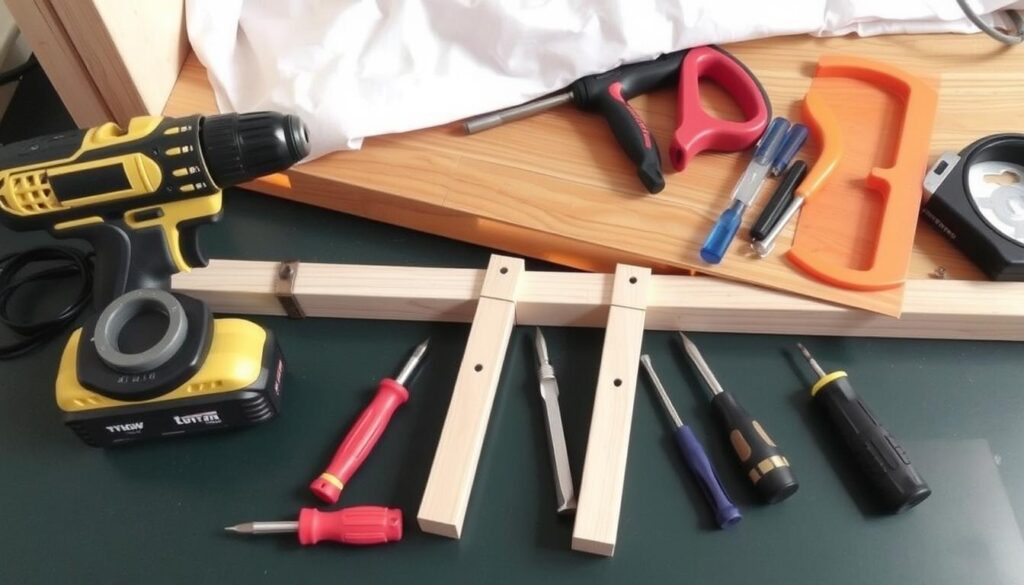
Recommended Materials Based on Ladder Type
The materials you’ll need depend on the type of ladder you’re repairing. For solid pine ladders, source matching pine lumber for replacements. High-quality wood glue and exterior-grade screws are also essential.
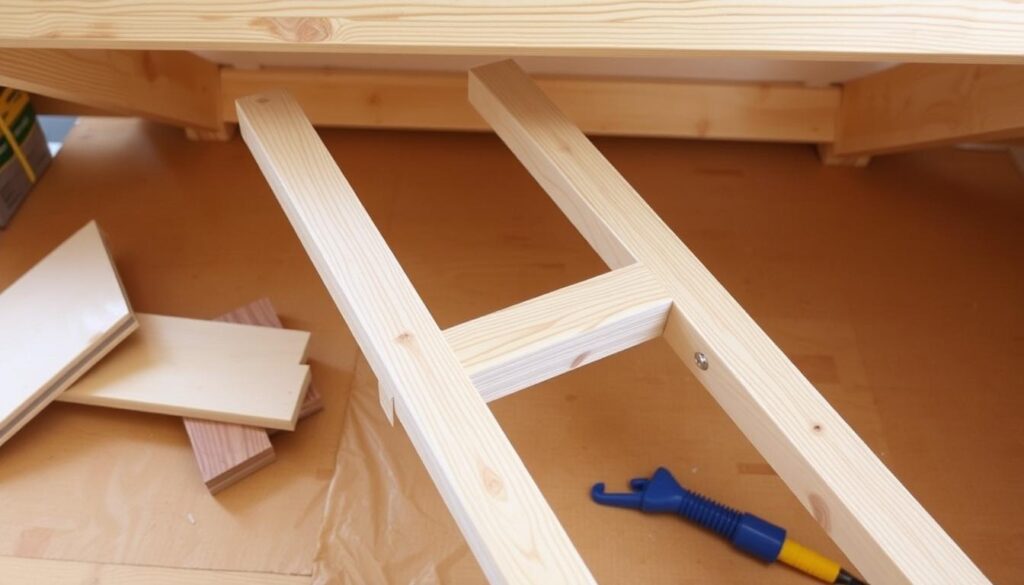
Using the right materials, such as solid pine and high-quality wood glue, ensures a durable repair. Consider using threaded inserts for areas where screws have stripped out the wood, and metal brackets for added strength.
Safety Precautions Before You Begin
To avoid accidents, understanding the safety measures for bunk bed ladder repair is essential. Ensuring your safety is paramount when undertaking such repairs.
Weight Considerations for Bunk-Bed Ladders
When repairing a bunk bed ladder, it’s vital to consider the weight it will bear. The base of the bed is crucial as it holds you up, much like how a mattress provides comfort. Using heavy duty mounting hardware is recommended, even if the original equipment was lighter, to ensure the ladder can support the intended weight.
Ensuring Proper Installation for Safe Use
Proper installation is key to safe ladder use. Ensure the ladder is securely attached to the bunk bed frame with no wobbling or movement. The angle of installation should be between 75-80 degrees from horizontal for optimal safety and ease of use. Additionally, consider adding non-slip material to rungs, especially for children’s bed safety.
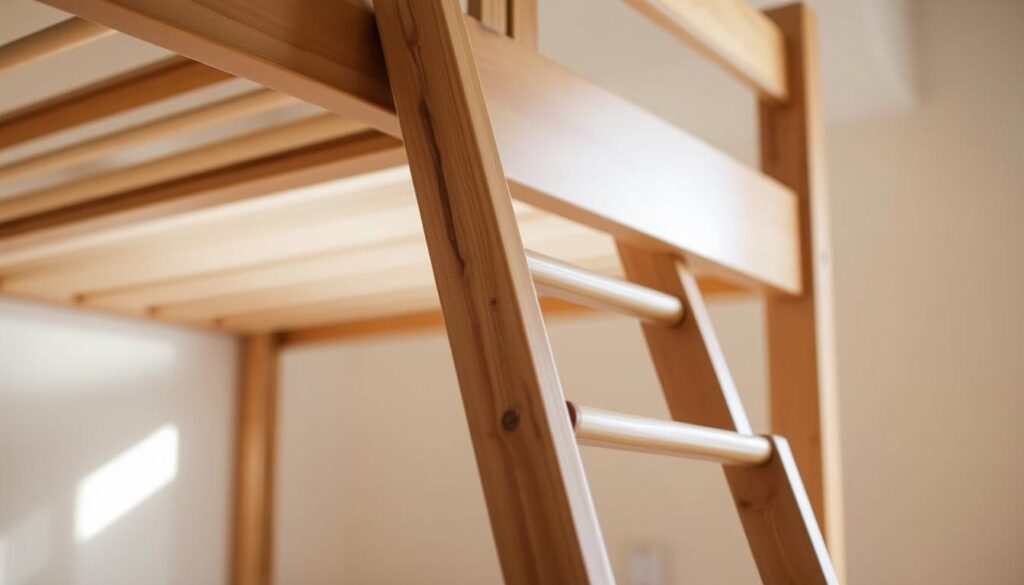
How to Fix Broken Bunk-Bed Ladder Rungs
You can easily repair or replace damaged rungs on your bunk-bed ladder with the right guidance. The process involves assessing the damage and applying the appropriate fix.
Repairing Cracked or Split Rungs
For cracked or split rungs, you can use a combination of wood glue and screws to reinforce the damaged area. Begin by cleaning the crack and applying wood glue. Clamp the rung until the glue dries, then drive screws into the rung to add extra strength. This method is effective for minor damage.
Replacing Completely Broken Rungs
When a rung is beyond repair, replacement is necessary. Measure the original rung dimensions precisely, including length and diameter. Cut a replacement rung from matching material. Create proper joinery on the ends to match the original design. Use a combination of wood glue and screws for maximum strength when installing the new rung.
| Step | Action | Tools/Materials Needed |
|---|---|---|
| 1 | Measure the original rung dimensions | Tape measure |
| 2 | Cut a replacement rung | Saw, matching material |
| 3 | Install the new rung | Wood glue, screws, drill |
Repairing Damaged Ladder Side Rails
Repairing damaged ladder side rails is a crucial step in restoring the safety and functionality of your bunk bed. The side rails are fundamental to the ladder’s structure, providing the necessary support for the rungs and ensuring stability during use.
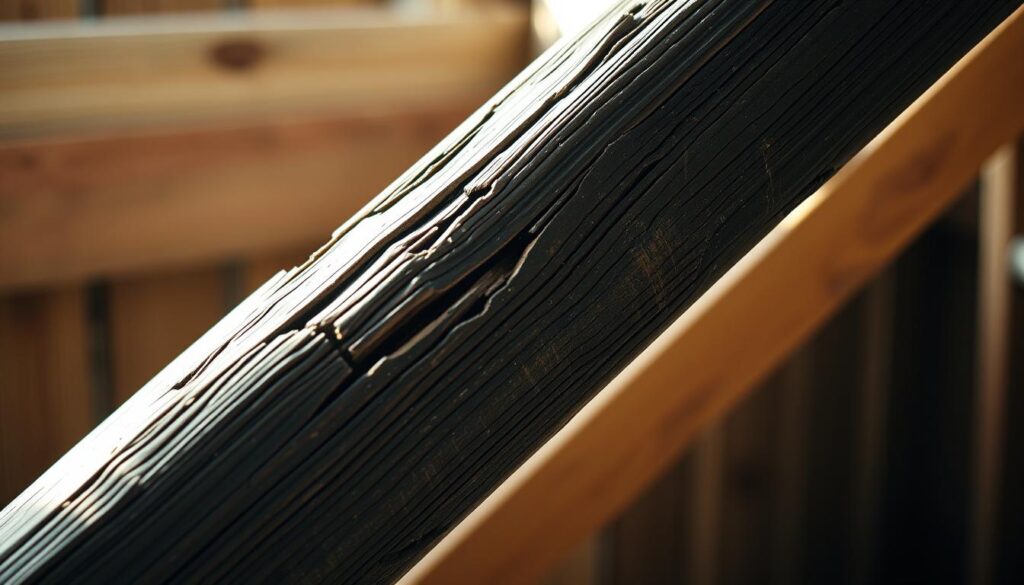
Fixing Loose Joinery Between Rails and Rungs
Loose joinery between the side rails and rungs can significantly compromise the ladder’s integrity. To fix this, you should first inspect the joints for any signs of damage or wear. If the joints are loose due to worn-out screws, replacing them with new ones can help. For pine ladders, it’s essential to pre-drill screws to avoid splitting the wood. Tightening the screws or re-glueing the joints can often resolve the issue, restoring the ladder’s stability.
Strengthening Weakened Side Rails
Weakened side rails can be reinforced to extend the life of your bunk-bed ladder. One effective method is to attach sister pieces of matching wood alongside the damaged section using glue and screws. For cracked rails, drilling small holes at the end of the crack can prevent further splitting before applying glue. Additionally, metal mending plates can be attached to the inside face of the rail for extra strength. Ensuring that any reinforcement doesn’t interfere with the ladder’s function or create sharp edges is crucial.
Reinforcing Ladder Connections to the Bunk Bed
To guarantee a safe and stable bunk bed experience, reinforcing the ladder connections is essential. A secure connection between the ladder and the bed frame prevents accidents and ensures the longevity of the bunk bed.
Installing Replacement Ladder Hooks
When the original ladder hooks are damaged, installing replacement hooks is a straightforward solution. You can purchase replacement bunk bed ladder hooks, such as the 4X Bunkbed ladder hook (EB80), which are designed to securely fix the ladder to the bunk bed. Ensure that the replacement hooks are compatible with your bunk bed’s design.
Creating Custom Mounting Solutions
In cases where standard ladder hooks are unavailable or unsuitable, creating custom mounting solutions may be necessary. You can consider fabricating metal brackets or using wooden cleats to securely attach the ladder to the bed frame. When designing custom mounts, ensure they distribute weight evenly and prevent the ladder from shifting during use. Through-bolting can provide the strongest connection for permanent installations.
Advanced Joinery Techniques for Long-Lasting Repairs
Enhancing the longevity of your bunk bed ladder repair requires the application of advanced joinery techniques. When repairing a bunk bed ladder, the type of joinery used can significantly impact the durability and strength of the fix. You can use various methods to reinforce the ladder’s structure, ensuring it remains safe and functional.
Using Dados and Screws for Maximum Strength
To achieve maximum strength in your bunk bed ladder repair, consider using dados and screws. Dados are grooves cut into the side rails where the rungs fit, providing additional support. By combining dados with screws, you create a robust joint that can withstand heavy use. This method is particularly effective for ladders with angled rungs, as it allows for precise alignment and added stability.
Mortise and Tenon Joints for Wooden Ladders
Mortise and tenon joints are a traditional woodworking technique ideal for wooden ladder construction. You can opt for either through tenons, which pass completely through the side rail, or blind tenons, which stop within the rail. Through tenons offer maximum strength and visual confirmation of proper fit, while blind tenons provide a cleaner appearance. To ensure optimal strength, the tenon should be 1/3 to 1/2 the thickness of the rung. Apply glue to all surfaces before assembly and clamp firmly while curing. For added mechanical strength, consider pinning the tenon with a small dowel.
Conclusion
With the right techniques and materials, you can successfully fix your broken bunk-bed ladder and ensure it remains safe to use. Repairing your bunk bed ladder not only extends the life of your furniture but also guarantees a safe climbing experience.
Most repairs can be completed with basic woodworking tools and materials available at local hardware stores. If your ladder is made of solid pine, proper repair can provide many more years of reliable service. It’s also a good idea to consider heavy duty upgrades for improved longevity.
To maintain the quality of your repair, remember that safety should always be the primary consideration. Regular inspection of your bunk bed ladder can identify potential issues before they become dangerous failures. By documenting your repair process, you’ll be better prepared for any future maintenance needs, ensuring your ladder remains in excellent condition.
A properly repaired ladder should be indistinguishable from new in both appearance and function, making it safe for years to come.
